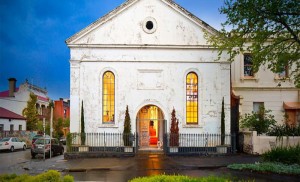Refugee housing – a long term issue

Copyright: Property Observer
Refugees in Australia are adequately housed – with none actually homeless – but they struggle with private rental costs and most find home ownership beyond their reach, according to new research.
A new study also found that while almost all refugees had a roof over their heads close to one in ten had experienced secondary homelessness in the form of living with family or friends as they had nowhere else to live.
It found new refugees are unlikely to experience severe housing problems in the first six months when they are receiving intensive support through the Humanitarian Settlement Services (HSS) program but that finding housing for refugees in HSS programs and resolving housing issues by case required considerable advocacy work.
The report, titled ‘Refugees, housing and neighbourhoods in Australia’ carried out by researchers from the University of WA and RMIT was commissioned by the Australian Housing and Urban Research Institute (AHURI) to look into the housing and neighbourhood experiences of refugees.
The study employed various research methods; including a longitudinal survey, focus group discussions and transect walks in Melbourne and Perth.
Lead Researcher Professor Paul Flatau said the majority of refugees surveyed were not currently employed (65 per cent) and were in receipt of income support payments.
At the same time, 35 per cent of respondents were employed in either part-time or full-time jobs, and for some, wage income was the main source of income enabling a transition into home ownership. Those who were not working were often engaged in education or training options.
“Refugees, who have been in Australia for more than a year but generally less than six years, are gaining a foothold in terms of housing and in terms of economic outcomes, but have not yet been able to make the final transition to their goal of home ownership,” the report said.
“They have been very successful in sustaining tenancies in the private rental market and are generally satisfied with the dwellings they reside in. They are engaged in education and training activities and in work, but the majority have yet to make the transition to full-time employment in the main and home ownership.
“From a policy perspective, it is clear that settlement programs have been effective in the main in ensuring refugees access long-term accommodation. However, beyond this, the problem is not primarily a housing one but an employment and income one,” the report said.
It found the vast majority of refugees (85 per cent) were housed in private rental accommodation with most of the remainder staying with family or friends.
“This suggests that when the respondents to the survey found themselves in extreme housing difficulty, they were able to get support from members of their own community who assisted them,” the study said.
“Despite experiences of social isolation among respondents, the vast majority of survey respondents reported that they had been made to feel welcome in Australia,” it said.
But the report cited evidence from transect walks that revealed issues surrounding a general lack of communication or unfriendliness amongst neighbours who were also concerned about the ‘visibility’ of groups of refugees, particularly young people, congregating in public places and particularly in Melbourne.
In Melbourne, there was evidence the visibility of refugee youth congregating in public places, though normal behaviour for them, can lead to targeting by police and security, the report found.
Overall, the services provided through settlement providers, as well as mainstream housing and homelessness services, were identified as playing a vital role in helping refugees access and maintain housing, it said.
In addition, sporting events and church activities were also important factors in bringing the community together, the report found.
The majority of refugees resettled in Australia in the last few years came from African countries, the Middle East and Asia.
During 2012–13, Australia had an intake of 20,019 humanitarian entrants, an increase of 45 per cent from the previous year.












